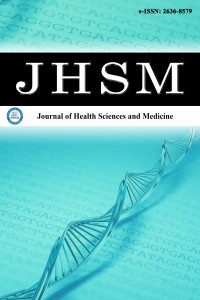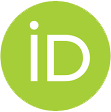1.
Irmak N. The importance of breast milk and factors influencing exclusive breastfeeding for the first six months. J Turk Fam Phy. 2016;07(2):27-31. doi:10.15511/tjtfp.16.02627
2.
Smith HA, Becker GE. Early additional food and fluids for healthy breastfed full-term infants. Cochrane Database Syst Rev. 2016;2016(8): CD006462. doi:10.1002/14651858.CD006462.pub4
3.
World Health Organization. WHO European region has lowest global breastfeeding rates 2019. Geneva: World Health Organization; 2015. cited 2020 March 23. Available from: http://www.euro.who.int/en/health-topics/Life-stages/maternal-and-newborn health/news/news/2015/ 08/who-european-region-has-lowest-global-breastfeeding-rates.
4.
Hacettepe Üniversitesi Nüfus Etütleri Enstitüsü. Türkiye Nüfus ve Sağlık Araştırması 2018. Erişim adresi: https://fs.hacettepe.edu.tr/hips/dosyalar/Ara%C 5%9Ft%C4%B1rmalar%20%20raporlar/2018%20TNSA/TNSA2018_ana_Rapor_compresse d.pdf;2019
5.
Kimani-Murage EW, Madise NJ, Fotso JC, et al. Patterns and determinants of breastfeeding and complementary feeding practices in urban informal settlements, Nairobi Kenya. BMC Public Health. 2011; 11:396. doi:10.1186/1471-2458-11-396
6.
Lauer JA, Betrán AP, Victora CG, de Onís M, Barros AJ. Breastfeeding patterns and exposure to suboptimal breastfeeding among children in developing countries: review and analysis of nationally representative surveys. BMC Med. 2004;2:26. doi:10.1186/1741-7015-2-26
7.
Demir G, Yardimcı H, Özçelik AÖ, Çakıroğlu FP. Compliance of mothers’ breastfeeding and complementary feeding practices with WHO recommendations in Turkey. Nutr Res Pract. 2020;14(6):654-666. doi:10.4162/nrp.2020.14.6.654
8.
Özgürhan G, Cömert S. An evaluation of the factors affecting exclusive breastfeeding. Istanbul Med J. 2020;21(4):301-306. doi:10.4274/imj.galenos. 2020.84594
9.
World Health Organization. Breastfeeding in the 21<sup>st</sup> century [Internet]. Geneva: World Health Organization; 2020. cited 2020 March 23. Available from: https://www.who.int/pmnch/media/news/2016/ breastfeeding_ brief.pdf.
10.
Aygör H, Düdükcü FT. Annelerin emzirme ve anne sütüne yönelik geleneksel uygulamaları: tanımlayıcı çalışma. Güncel Hemşir Araşt Derg. 2024;4(1):1-10.
11.
Bostancı G, Inal S. The evaluation of knowledge and practice about breastfeeding of mothers who delivering at a private baby friendly hospital. J Health Sci Profess (in Turkish). 2015;2(3):260-70. doi:10.17681/hsp.27403
12.
Çalık KY, Çetin FC, Erkaya R. Annelerin emzirme konusunda uygulamaları ve etkileyen faktörler. GÜSBD. 2017;6(3):80-91.
13.
Victora CG, Bahl R, Barros AJ, et al. Breastfeeding in the 21<sup>st</sup> century: epidemiology, mechanisms, and lifelong effect. Lancet. 2016;387(10017): 475-490. doi:10.1016/S0140-6736(15)01024-7
14.
Gün İ, Yılmaz M, Şahin H, et al. Kayseri Melikgazi Eğitim ve Araştırma Bölgesi’nde 0-36 aylık çocuklarda anne sütü alma durumu. Çocuk Sağl Hast Derg. 2009;52:176-182.
15.
Al-Sahab B, Lanes A, Feldman M, Tamim, H. Prevalence and predictors of 6-mont exclusive breastfeeding among canadian women: a national survey. BMC Pediatr. 2010;10(20): 1-9.
16.
İnanç BB.15-49 Yaş arası annelerin anne sütü ile ilgili uygulamaları ve etki eden faktörleri. Türk Aile Hek Derg. 2013;17(2): 51-55. doi:10.1186/ 1471-2431-10-20
17.
Patel A, Bucher S, Pusdekar Y, et al. Rates and determinants of early initiation of breastfeeding and exclusive breast feeding at 42 days postnatal in six low and middle-income countries: a prospective cohort study. Reprod Health. 2015;12 Suppl 2(Suppl 2):S10. doi:10.1186/1742-4755-12-S2-S10
18.
Wu Q, Tang N, Wacharasin C. Factors influencing exclusive breastfeeding for 6 months postpartum: a systematic review. Int J Nurs Knowl. 2022; 33(4):290-303. doi:10.1111/2047-3095.12360
19.
Şafak Ç, Ata Tutkun N. Anne sütü ile beslenme sürelerinin yaşam çözümlemesi ile incelenmesi: Kuzey Kıbrıs Türk Cumhuriyeti örneği. İzmir Dr Behçet Uz Çocuk Hast Derg. 2015;5(3):167-76. doi:10.5222/buchd. 2015.167
20.
Göktepe ST, Öztürk O. Annelerin bebeklerini emzirme süresi ve bunu etkileyen olası faktörler. TJFMPC. 2023;17(4):470-478. doi.org/10.21763/tjfmpc.1265079
21.
Tappin DM, Mackenzie JM, Brown AJ, Girdwood RW, Britten J, Broadfoot M. Comparison of breastfeeding rates in Scotland in 1990-1 and 1997-8. BMJ. 2001;322(7298):1335-1336. doi:10.1136/bmj.322.7298. 1335
22.
Ünsal H, Atlıhan F, Özkan H, et al. Toplumda anne sütü verme ve buna etki eden faktörler. Çocuk Sağl Hast Derg. 2005;48: 226-233. doi:10.5222/forbes.2021.04706
23.
Eker A, Yurdakul M. Annelerin bebek beslenmesi ve emzirmeye ilişkin bilgi ve uygulamaları. STED. 2006;15(9):158-163. doi:10.17681/hsp.451147
24.
Kartal B, Kaplan B, Buldu A, et al. Doğum sonu dönemdeki kadınların emzirme özellikleri ve bunu etkileyen meme sorunları. İzmir Üniv Tıp Derg. 2015;1(1):1-10.
25.
Yoldaş H, Dinçer T, Garipağoğlu M. 0-6 Aylık bebeklerin büyüme gelişme ve beslenme özelliklerinin değerlendirilmesi. Sağl Akademis Derg. 2021;8(1):29-35. doi:10.13140/RG.2.2.25022.56644
26.
Yahşi A, Şaylı T. Anne su¨tu¨nu¨ etkileyen fakto¨rler ve emzik kullanımının emzirme üzerine etkileri. Pam Med J. 2022;15(4):788-795. doi:10.31362/patd.1089158
27.
Inano H, Kameya M, Sasano K, et al. Japan environment and children’s study (JECS) Group. Factors influencing exclusive breastfeeding rates until 6 months postpartum: the Japan environment and children’s study. Sci Rep. 2021;11(1):6841. doi:10.1038/s41598-021-85900-4
28.
UNICEF. [cited 08.01.2025]. Available from: https://www.unicef.org/press-releases/world-breastfeeding-week-unicef-and-who-call-equal-access-breastfeeding-support; 2025.
29.
Reynolds R, Kingsland M, Daly J, et al. Breastfeeding practices and associations with pregnancy, maternal and infant characteristics in Australia: a cross-sectional study. Int Breastfeed J. 2023;18(1):8. doi:10. 1186/s13006-023-00545-5

